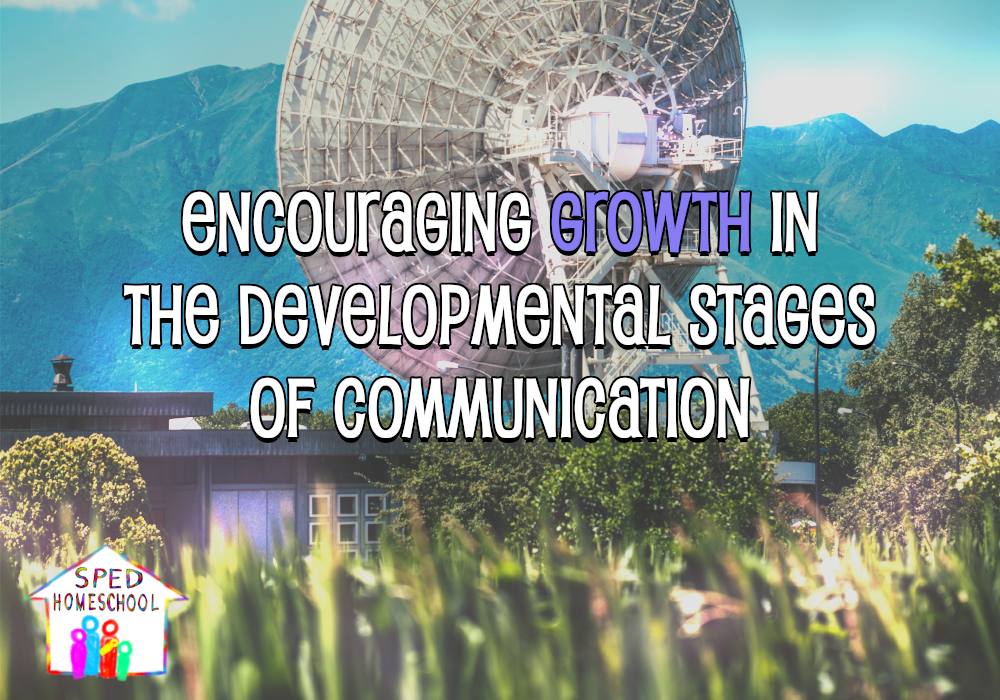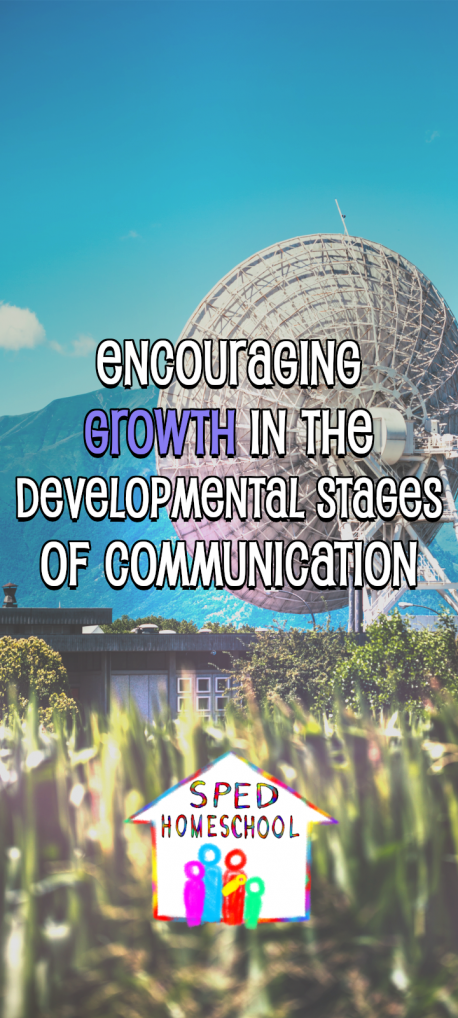
In my last post, I covered the basics of the DIR Method and why I think it is important for homeschoolers. One of the parts of DIR is to understand the developmental level of your child and how to use that knowledge to set attainable goals. So, in this post, we are going to dive a little deeper into this specific area of the DIR method.
The Nine Developmental Levels of Communication
When I worked in a private school for children with special needs, I was placed in the classroom that specifically focused on helping children with communication problems. We were taught nine different developmental stages for communication because communication is the basis for all learning. Here are those levels.
1 – Self-regulation and Attention
Typically reached between 0-3 months, this child can use their senses to stay calm, focus for short periods of time on one particular activity, and interact with another person.
2- Social Engagement and Relating
Typically reached between 2-7 months, this child can develop a relationship and attachment and interact with affection with another person.
3- Reciprocal Interaction
Typically reached between 3-10 months, this child can open and close circles of communication and express intentions, interests, and needs
4- Purposeful Problem-Solving Communication
Typically reached between 9-18 months, this child can use more complex circles of communication by combining gestures, actions, and words to gain a sense of self and problem solve.
5 – Creating and Elaborating Ideas
Typically reached between 24-30 months, this child can create ideas, pretend play, and convey emotional intention through play.
6- Emotional Thinking
Typically reached between 36-48 months, this child can make bridges between different emotional ideas.
7 – Triangular Thinking
Typically reached between 5-7 years, this child can start to process the idea of multiple causes for emotions or events.
8 – Gray Area Thinking
Typically reached between 7-10 years, this child can understand that emotions can be felt in varying degrees.
9 – Self-Reflection
Typically reached between puberty and early adolescence, this child starts to define who they are and to have an internal standard to relate back to their experiences.
Keep in mind, the given age markers are when typically developing children are likely to reach these milestones. So, in working with a child who has special needs and developmental delays you should not hold them to these standards; it is only a marker for your reference. Even typically developing children don’t reach all these markers by these indicated age ranges.
But now, what do you do with this knowledge?
Have you ever seen anyone pull taffy before? It is pretty mesmerizing to watch. When it is done by hand, a hook is attached to a wall. Then the candy maker takes a big ball of taffy and hooks part of it to the wall and stretches it. Then he puts it all back together in order to hook it in a different spot and stretch it again. It is a constant routine of stretching, relaxing back to normal, and then stretching again.
That is how you should think of these milestones. Your student will have a developmental step that they are comfortable staying within. That is a good baseline. You should then try to expand and stretch their capacities to the next step while still allowing your student to come back to what is comfortable before things get too frustrating. To read a more in-depth post about how to effectively teach using this combination of stretching and resting, visit this post.
One Day at a Time
It is also important to keep in mind that some days are going to fall below what is normally comfortable for your student. That is okay! We all have bad days or days when we don’t feel like ourselves, and your child will have those too. Work where they are and expand as much as they can take. The taffy puller doesn’t break the taffy, only stretches it. You want to do the same for your child. Stretch them, but don’t cause them to break with frustration. Knowing where your child is, what the next step is, and how you can work with them to reach that next step will allow you to help your child reach new goals in their communication.

